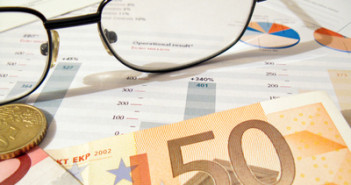EUR/USD has lost ground in Thursday trading, with the pair dipping below the 1.36 line early in the European session. In economic news, the US Federal Reserve announced another $10 billion taper of its QE scheme. Taking a look at events on Thursday, German Unemployment Change sparkled, posting its sharpest drop in almost three years. Spanish GDP continues to improve and matched the estimate. In the US, it’s a busy day with three events – Advance GDP, Unemployment Claims and Pending Home Sales.Â
Here is a quick update on the technical situation, indicators, and market sentiment that moves euro/dollar.
EUR/USD Technical
- EUR/USD lost ground late in Asian trading, ending the session at 1.3624. The pair has edged lower early in the European session and is just above the 137 line.
Current range: 1.3580 to 1.3650.
Further levels in both directions:

- Below: 1.3580, 1.3515, 1.3450, 1.34, 1.3320, 1.3240, 1.3175 and 1.31.
- Above: 1.3650, 1.37, 1.3800, 1.3832 and 1.3940.
- 1.3650 has reverted to a resistance role. 1.3700 follows.
- On the downside, 1.3580 is under pressure. 1.3515 is next.
EUR/USD Fundamentals
- All Day – German Preliminary CPI . exp. -0.4%.
- 8:00 Spanish Flash GDP. exp. 0.3%, actual 0.3%.
- 8:55 German Unemployment Change. exp. -5K, actual -28K.
- 10:16Â Italian 10-year Bond Auction. actual 3.81%.
- 13:30 US Advance GDP. exp. 3.3%. See how to trade this event with EUR/USD.
- 13:30 US Unemployment Claims. exp. 331K.
- 13:30 US Advance GDP Price Index. exp. 1.2%.
- 15:00 US Pending Home Sales. exp. -0.1%.
- 15:30 US Natural Gas Storage. exp. -225B.
*All times are GMT For more events and lines, see the Euro to dollar forecast.
EUR/USD Sentiment
- Fed Taper, Round 2: Most analysts had predicted that the Federal Reserve would go ahead and reduce QE for a second straight month, and that’s exactly what transpired on Wednesday. The Federal Reserve cut its stimulus program by another $10 billion, lowering QE to $65 billion each month. Fed chair Bernard Bernanke has indicated that the Fed plans to wind up QE by the end of the year, so we can expect further tapers, barring any surprise downturns in the US economy. Wednesday’s policy meeting was Bernard Bernanke’s last hurrah, as Janet Yellen takes over the reins as the Fed chair on February 1.
- German unemployment tumbles: The German locomotive continues to pick up speed, much to the delight of the markets. This time it was Unemployment Change, which sparkled in December with a drop of 28 thousand, crushing the estimate of a drop of 5 thousand. This was the indicator’s best showing since March 2011. The Unemployment Rate stayed pegged at 6.8%. Earlier in the week, Consumer Climate and Ifo Business Climate rose, indicating that German businesses and consumers are optimistic about the economy as we begin 2014. Germany is the Eurozone’s largest economy, and the region will need Germany to lead the way to an economic recovery.
- US manufacturing slides: US manufacturing numbers looked weak in December. Core Durable Goods Orders posted another decline, its sixth in seven readings. The key manufacturing release fell 1.6%, well short of the estimate of a 0.7% gain. It was the indicator’s sharpest drop since August 2012. There was no relief from Durable Goods Orders, which plunged 4.3%, nowhere near the estimate of a 1.9% gain. CB Consumer Confidence looked much sharper, climbing to 80.7 points, up from 78.1 a month earlier. The estimate stood at 78.3 points.
- Deflation concerns in Eurozone: Eurozone inflation indicators continue to point to weak inflation, and even the relatively healthy German economy is showing soft inflation numbers. The situation as deteriorated to such an extent that the IMF has voiced its concern about the danger of deflation in Europe. This was seen in a report published by the organization as well as in a speech by IMF Managing Director Christine Lagarde in Davos. While the ECB seems concerned with low inflation and not outright deflation, any further deterioration could push the ECB to set a negative deposit rate as soon as March 2014. This is a primary source of euro vulnerability.



